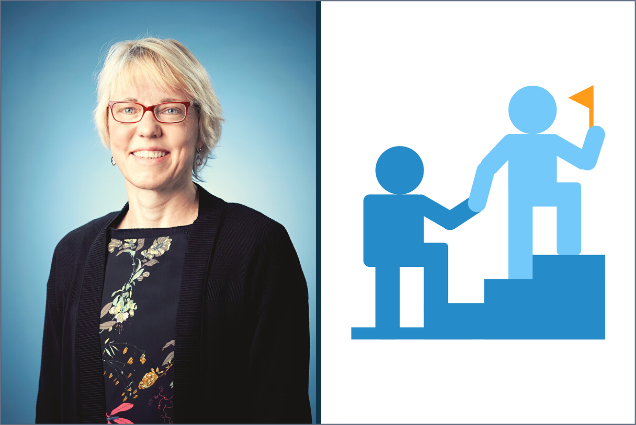InterNations, the largest international community for people who live and work abroad, is a remote-first company. Team members are free to work wherever they like — from home, the office, or a combination of both. In part 1 of our series on remote work, you’ll find out more about how InterNations approaches the challenges of this new work style.
Part I: Founder & Co-CEO Malte talks to our Corporate Communications Team Lead Jane about the changes that an online culture brings to a team.
1. Why did InterNations switch to a remote setting?
Even before the pandemic started, we had introduced a flexible work policy.
So, when COVID-19 regulations made working from home mandatory within a matter of days, our team members luckily already had the technical setup to work remotely. Productivity remained high during the pandemic, and the teams enjoyed the higher flexibility and didn’t want to return to the office full time.
That’s when we decided to turn change into opportunity by embracing a remote-first model.
The advantages are clear: Employees appreciate the increased flexibility. They can live and work wherever they like. Our team members in the Munich area can now choose to live in less expensive places further away from the city center, as they no longer have to commute. And as an employer, we can recruit people from a much wider area than just in and around Munich.
2. What did you learn about remote work in these first few years?
In the beginning, we assumed many people would want to return to the office after the pandemic. So, we envisioned needing a hybrid setup.
In such a setup, it was really important to us to avoid a so-called proximity bias. That’s when the people who primarily work from the office have an advantage over those working from home, research shows. It can happen that team members who are on site are more in the loop and get promoted faster — just because they’re physically present.
So, we spent a lot of time rewriting our collaboration rules and processes. Our new meeting guidelines, for example. No matter where someone is working from that day, each participant needs to join the meeting online. This avoids colleagues working from home feeling excluded when those in the office are laughing and joking together in the same room.
However, we soon realized that we would never again be in the situation where the majority of the team works together in the same office building. The share of team members outside a commuting distance grew. And even the employees still living in Munich no longer come in to the office every day.
While a proximity bias would never actually apply to our work situation, simply thinking about it was a good exercise. It helped us to become more disciplined about processes and structures in a digital work environment. And it made us explore different formats of team bonding and really think about breaking down barriers between people and teams.
In short, we learned that you just can’t re-create the “offline” world in an online setting — and that applies to both work processes and socializing. You need to adapt and find new solutions.
3. What’s changed in terms of work processes?
Nothing’s changed fundamentally, but it’s the little things that can make a big difference.
It’s now even more important to have the right tools for collaboration. Working together on shared documents, knowing all the possibilities that our online communication tools offer and how to use them effectively — all this has become the backbone of collaborating smoothly in a remote setting.
That’s why we started regular training sessions for all these tools and included how-to guides in our internal wiki. Documentation in general is very important to make sure there’s a good flow of information. We’ve gotten a lot better at that since going remote.
And communication: it’s basically impossible to overcommunicate in a remote setting. After all, it’s easy to feel disconnected and uninformed when you’re sitting alone at home. So, there’s a greater need for interaction and conversation, and every aspect of company life needs to be more inclusive.
And we’ve noticed a nice side effect: our meetings have become more efficient. Online, people are more inclined to stick to the agenda and get to the point.
4. Where do you see the biggest challenges of remote work?
The biggest challenge is to maintain and shape your corporate culture. Our culture and team spirit have always been one of our biggest assets as an employer. Having this big group of international, open, and incredibly team-oriented people in one place was unique and made working at InterNations a special experience.
Switching to remote-first was a big shift. Now it’s sometimes months before I get to meet a new colleague in person. There’s no opportunity for that occasional chat in the hallway. Our corporate culture, which we very much shaped by and experienced through our daily interactions with each other, all of a sudden became harder to grasp.
This also makes it much harder to “pass on” to newcomers. That’s why we did a big culture analysis last year to see if we’re still on the right track. It’ll also help us figure out how to preserve and shape our culture in a remote world.
Culture and team spirit are closely related. Working remotely, it’s harder to create personal connections, and team spirit suffers. This is something we acknowledge and try to counteract via a mix of online bonding and in-person events.
We meet up in person twice a year, either in Munich or in another location, and we notice that collaboration is easier afterwards. We also introduced online team events with games and quizzes and other online formats, like a virtual coffee with a colleague. In a remote-first company, you simply have to work harder to engage with your employees.
5. How about the negative impact that working purely remotely can have on physical and mental well-being?
Mental and physical health are bigger issues in a remote setting. Some people may get less physical activity without the daily commute. And it might sometimes be more difficult to switch off, so to speak, when your workplace is in your own home. Another issue is that some employees feel quite isolated and alone at home.
But we’ve found ways to work on these issues, for instance, by adapting employee benefits to the remote world. One example: Yoga classes that used to happen in the office now take place online. But we need to go much further. That’s why we’ll make this topic a priority this year.
6. Were you concerned about a loss of productivity in a remote setting?
Like most employers, we were skeptical at first. But our team did prove us wrong! Productivity remained very high, and people used the flexibility in a positive way.
Our teams are motivated through the company mission and driven to achieve the goals they have set for themselves. What’s helped in translating company goals into team targets are OKRs, a framework we use for defining objectives and key results for each team.
Maybe we’re just lucky. But when you think about it, it actually doesn’t make any sense that more flexibility would have a negative impact on people’s motivation and willingness to work.
If there is a negative impact, it’s usually due to other circumstances, such as the possible isolation that comes with working from home or the lack of an adequate workspace.
7. What is your vision of remote work in the future? Is there anything you would like to change?
We would like to make a digital nomad lifestyle possible for our team members, offering them even greater flexibility and mobility to work and travel as they please. Currently, our employees can opt to work permanently from another country, but they cannot work abroad temporarily because of social security issues.
This is a shame, as many of our employees would like to be able to travel and work for a week from Spain, for example. As many of our team members are expats, this would also make it easier for them to spend more time with their families.
And we in management would like to be able to offer this type of increased flexibility across borders. That would be a big game changer.

